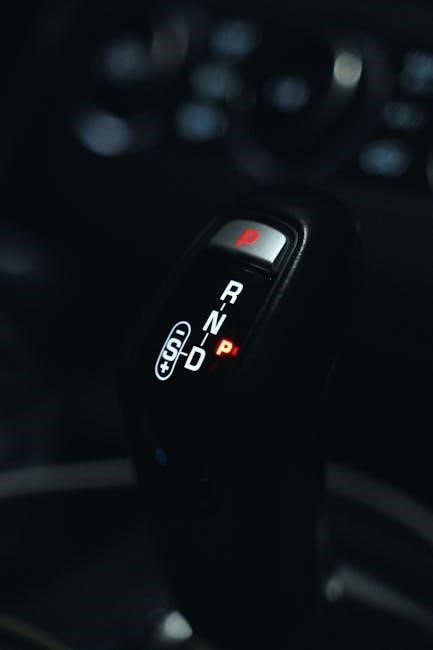
Manual and automatic transmissions are two distinct drivetrain systems offering unique driving experiences. Manual transmissions require driver interaction with a clutch and gearshift, while automatic transmissions shift gears automatically, providing ease and convenience. Converting a manual to an automatic transmission is a complex process that enhances driving comfort, especially in heavy traffic or towing scenarios, making it a popular choice for modern drivers seeking smoother control and reduced effort behind the wheel.
1.1. Definition of Manual Transmission
A manual transmission, also known as a stick shift, is a type of drivetrain system that requires the driver to manually change gears using a clutch pedal and a gearshift. It consists of a gearbox with multiple gear ratios, allowing the driver to control the engine’s torque and speed. The clutch pedal disengages the engine from the transmission, enabling smooth gear shifts. This system provides direct control over the vehicle’s performance, making it popular among driving enthusiasts. However, it requires skill and practice to operate effectively, especially in heavy traffic or hilly terrain, which can be challenging for inexperienced drivers.
1.2. Definition of Automatic Transmission
An automatic transmission is a type of drivetrain system that automatically changes gear ratios without driver input, providing a smoother and more convenient driving experience. It uses a torque converter to transfer power from the engine to the transmission, eliminating the need for a clutch pedal. The system relies on hydraulic or electronic controls to select the appropriate gear based on driving conditions, such as speed and acceleration. Automatic transmissions are popular for their ease of use, especially in stop-and-go traffic, and are commonly found in modern vehicles. They offer a hassle-free driving experience, making them ideal for drivers who prioritize comfort and simplicity behind the wheel.
1.3. Brief History of Transmission Development
The evolution of transmissions began in the late 19th century with manual gearboxes, which required drivers to shift gears manually using a clutch and gear lever. In the 1930s, the first automatic transmissions emerged, offering convenience by eliminating manual shifting. Early automatics were hydraulic-based and became more refined over time. The 1950s and 1960s saw widespread adoption of automatic transmissions in mass-produced vehicles. Modern advancements include dual-clutch and continuously variable transmissions, blending efficiency and performance. Today, automatic transmissions dominate the automotive market, with ongoing innovations in technology, such as AI-driven systems, further enhancing their capabilities and efficiency.
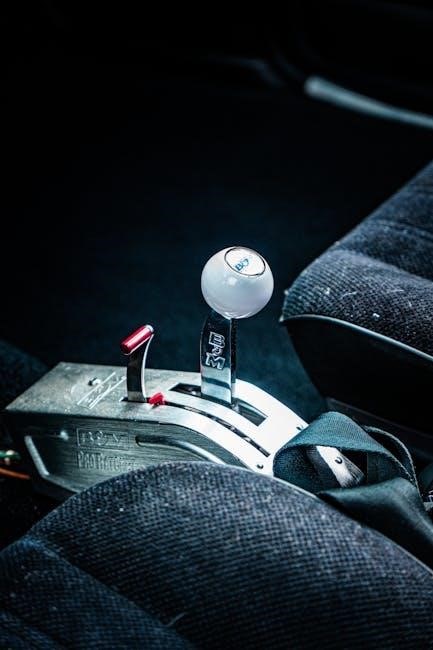
Benefits of Converting to an Automatic Transmission
Converting to an automatic transmission offers enhanced driving convenience, improved ease of use, and smoother performance, making it ideal for modern drivers seeking effortless control and efficiency behind the wheel.
2.1. Enhanced Driving Convenience
Converting to an automatic transmission significantly enhances driving convenience by eliminating the need for manual gear shifting. This makes driving easier, especially in heavy traffic or hilly terrain, reducing driver fatigue. Automatic transmissions provide smooth power delivery and consistent performance, allowing drivers to focus solely on steering and braking. The absence of a clutch pedal also simplifies vehicle operation, making it more accessible for new or less experienced drivers. Additionally, modern automatic transmissions often feature advanced technologies like dual-clutch systems or continuously variable transmissions (CVTs), which optimize performance and fuel efficiency. Overall, the switch to an automatic transmission offers a more relaxed and enjoyable driving experience.
2.2. Improved Ease of Use
Switching from a manual to an automatic transmission greatly improves ease of use, particularly for drivers who struggle with or prefer not to manage gear shifting. Automatic transmissions eliminate the need for a clutch pedal and manual gear selection, reducing driver workload and stress. This makes driving more straightforward, especially in stop-and-go traffic or hilly areas, where constant shifting is required in manual vehicles. Additionally, automatic transmissions provide seamless power delivery, allowing drivers to focus solely on steering and braking. The simplicity of operation also makes automatic vehicles more accessible to new or inexperienced drivers, further enhancing overall usability and driving comfort.
2.3. Advantages for Towing and Hauling
Converting to an automatic transmission offers significant advantages for towing and hauling. Automatic transmissions provide smoother power delivery, reducing wear on the vehicle and improving control when towing heavy loads. They eliminate the need for manual gear shifts, minimizing the risk of incorrect shifting that could strain the engine or transmission. This consistency is particularly beneficial when hauling trailers or heavy cargo, as it maintains steady power output and reduces driver fatigue. Additionally, automatic transmissions often feature torque converters, which enhance low-speed torque delivery, making it easier to manage heavy loads from a standstill. This makes automatic transmissions a preferred choice for drivers who frequently tow or haul.
2.4. Potential Performance Improvements
Converting to an automatic transmission can unlock notable performance improvements, particularly in modern vehicles. Automatic transmissions, especially advanced models like dual-clutch systems, offer faster and smoother gear shifts compared to manual counterparts. This reduces lag and optimizes acceleration, especially in high-performance driving scenarios. Additionally, automatic transmissions often come with features like torque converters, which can enhance low-end torque delivery, providing quicker responses during acceleration. This makes automatics advantageous in situations requiring rapid power delivery, such as merging onto highways or climbing steep inclines. Furthermore, the seamless shifting reduces the risk of missed gears, ensuring consistent power delivery and potentially improving overall vehicle responsiveness and efficiency.
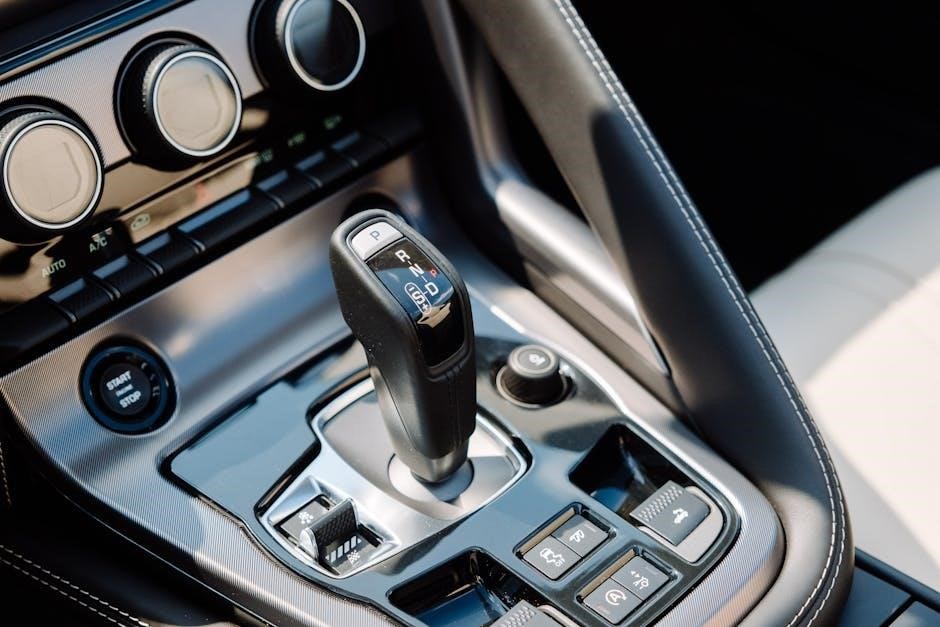
The Conversion Process
The conversion process involves several critical steps, including selecting the right automatic transmission, removing manual components, installing the new system, integrating necessary parts, and thorough testing.
3.1. Selecting the Right Automatic Transmission
Selecting the right automatic transmission is crucial for a successful conversion. The transmission must align with the vehicle’s engine specifications and performance requirements. Factors to consider include torque capacity, gear ratios, and compatibility with existing drivetrain components. Modern automatic transmissions, such as dual-clutch or continuously variable units, offer advanced features like smooth shifting and improved fuel efficiency. Additionally, torque converters replace the manual clutch, ensuring seamless power transfer from the engine to the transmission. Researching and consulting with professionals can help identify the optimal transmission for the vehicle, ensuring reliability and optimal performance post-conversion.
3.2. Removing the Manual Transmission Components
Removing the manual transmission components is the first physical step in the conversion process. This involves disconnecting and extracting the manual gearbox, clutch, and associated parts like the gearshift and linkages. The process requires careful handling to avoid damaging surrounding components. Once removed, the area is prepared for the installation of the automatic transmission, ensuring a clean and proper fit. Specialized tools and mechanical expertise are often necessary to complete this phase efficiently and safely. Proper disposal or storage of the removed parts is also essential, as they may no longer be needed post-conversion.
3.3. Installing the Automatic Transmission
Installing the automatic transmission is a critical step that requires precision and care. The process begins with aligning the transmission with the engine and securing it in place. The torque converter, which replaces the clutch, must be properly attached to the engine’s flywheel. Next, the transmission is bolted to the engine, and essential connections like coolant lines, electrical wiring, and hydraulic lines are reestablished. The transmission pan is then sealed, and fresh fluid is added to ensure proper lubrication. Finally, the transmission is tested in a controlled environment to ensure smooth operation and correct gear engagement before the vehicle is ready for road testing.
3.4. Integrating Necessary Components
After installing the automatic transmission, integrating essential components ensures seamless functionality. The throttle valve cable or electronic throttle control must be connected to synchronize engine RPM with transmission shifts. The transmission control module (TCM) is configured to communicate with the vehicle’s ECU, optimizing gear changes and torque delivery. Brake pedal adjustments are made to accommodate the automatic’s torque converter, preventing unwanted engagement. Additionally, the parking pawl and gear selector are installed to ensure safe and accurate gear selection. Wiring harnesses and sensors, such as speed and pressure sensors, are connected to monitor and regulate transmission performance. Proper integration of these components is vital for reliable operation and a smooth driving experience.
3.5. Testing the New System
Testing the new automatic transmission system is crucial to ensure proper functionality and performance. Begin with a visual inspection of all connections and components. Perform a series of low-speed tests in a controlled environment to check smooth gear transitions and braking compatibility. Gradually progress to highway speeds to evaluate acceleration, shifting accuracy, and responsiveness. Monitor the transmission’s temperature and fluid levels during operation. Any unusual noises, hesitation, or erratic behavior should be addressed promptly. A thorough test drive helps identify potential issues, ensuring the system operates flawlessly under various driving conditions. This step is essential for validating the success of the conversion and providing a reliable driving experience.

Cost Considerations
Converting a manual to an automatic transmission involves significant expenses, including parts, labor, and potential modifications. Costs typically range from $15,000 to $30,000, depending on the vehicle and complexity. Additional expenses may include axle regearing or custom fabrication, emphasizing the need for a detailed budget and professional consultation to ensure a successful conversion.
4.1. Parts and Accessories Costs
The cost of parts and accessories for a manual to automatic transmission conversion can vary significantly. A full conversion kit, including the automatic transmission, torque converter, and necessary adapters, typically ranges from $8,000 to $15,000. Additional components like a new bellhousing, flywheel, and clutch system may add $1,000 to $2,000. Universal kits are available for common vehicles, while custom setups for rare or high-performance cars can exceed $20,000. Accessories such as transmission coolers, shifters, and wiring harnesses further increase expenses. The total cost depends on the vehicle’s make, model, and the complexity of the conversion, making it essential to research and budget accordingly for a successful transition.
4.2. Labour Costs
Labor costs for a manual to automatic transmission conversion are a significant portion of the total expense. Professional mechanics or transmission specialists typically charge between $5,000 and $10,000 for the installation, depending on the complexity of the job. High-performance or custom conversions may require specialized expertise, increasing labor costs to $10,000 or more. Additionally, the time required for the conversion can range from 40 to 100 hours, depending on the vehicle and transmission type. These costs emphasize the importance of consulting experienced professionals to ensure a smooth and reliable conversion process. Labour costs vary by location and mechanic expertise, so it’s essential to compare quotes and reviews before committing to a service provider.
4.3. Total Estimated Cost
The total estimated cost for a manual to automatic transmission conversion typically ranges from $7,000 to $15,000, depending on the vehicle and transmission type. This includes parts, labor, and additional components such as a torque converter, transmission cooler, and necessary wiring or software updates. High-performance or custom transmissions can increase costs to $20,000 or more. Factors such as the vehicle’s make, model, and year, along with the complexity of the installation, significantly influence the final price. Budgeting for potential upgrades, such as axle regearing or transmission mounts, is also recommended to ensure optimal performance and reliability after the conversion.
4.4. Financing Options
Financing a manual to automatic transmission conversion is possible through various options. Many transmission shops offer financing plans or partnerships with lenders to help cover the costs. Additionally, personal loans or credit cards can be used, though interest rates may apply. Some manufacturers or conversion kit providers offer payment plans or bundled deals. For high-end or custom conversions, specialized automotive finance companies may provide tailored solutions. It’s important to compare rates and terms to find the most affordable option. Consulting with a financial advisor or the conversion specialist can help determine the best approach for your budget and needs.
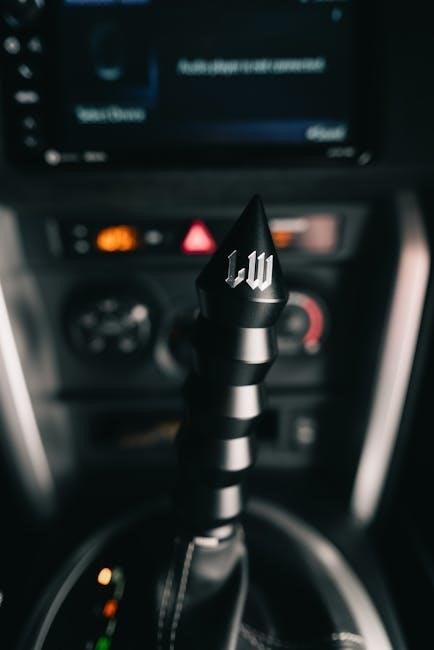
Challenges and Considerations
Converting a manual to automatic transmission involves technical challenges, space constraints, and compatibility issues. Errors during installation can lead to system malfunctions, requiring skilled expertise and precision.
5.1. Technical Difficulties
Manual to automatic transmission conversion presents significant technical challenges. Replacing the manual gearbox with an automatic requires precise alignment and installation of components like the torque converter and new transmission mounts. Ensuring compatibility between the automatic transmission and the vehicle’s engine, ECU, and drivetrain is critical. Wiring and software adjustments may be necessary to integrate modern automatic systems, which can complicate the process. Additionally, mechanical modifications, such as adapting the bellhousing or driveshaft, often require specialized tools and expertise. Mistakes in these areas can lead to system malfunctions, emphasizing the need for skilled professionals to handle the conversion effectively.
5.2. Space and Compatibility Issues
Manual to automatic transmission conversion often faces physical space constraints. Automatic transmissions are typically larger and heavier than manual units, requiring additional clearance in the engine bay. Compatibility issues arise when the automatic transmission’s dimensions or mounting points don’t align with the vehicle’s existing chassis. Custom modifications, such as fabricated mounts or shortened driveshafts, may be necessary to ensure proper fitment. Additionally, the torque converter replaces the manual clutch, which can affect drivetrain geometry. In some cases, wiring and control systems may not be compatible, necessitating custom harnesses or ECU adjustments. These challenges highlight the importance of precise measurements and professional expertise to overcome spatial and mechanical incompatibilities during the conversion process.
5.3. Potential for Errors
Manual to automatic transmission conversions are intricate processes with a high potential for errors. Improper installation of components, such as the torque converter or transmission mounts, can lead to mechanical failures and costly repairs. Misalignment of the driveshaft or incorrect wiring of the transmission control system may result in erratic shifting or complete system malfunction. Additionally, errors in software calibration or ECU configuration can disrupt communication between the engine and transmission, causing poor performance or even damage to the drivetrain. These risks underscore the need for meticulous attention to detail and the expertise of a qualified technician to minimize the likelihood of errors and ensure a successful conversion.

Vehicle Compatibility
Vehicle compatibility for manual to automatic conversions depends on the car’s make, model, and engine specifications. Some cars are more suitable than others due to drivetrain and parts availability, making professional consultation essential to ensure a feasible and regulation-compliant conversion.
6.1. Common Vehicles for Conversion

Certain vehicles are more commonly converted from manual to automatic due to their popularity, parts availability, and compatibility. Classic sports cars, such as the Ford Mustang and Chevrolet Camaro, are frequent candidates for automatic conversions, as are European models like the BMW 3 Series and Volkswagen Golf. Modern vehicles like the Toyota 86 and Subaru BRZ also see conversions, particularly for performance or convenience reasons. Additionally, trucks and SUVs, such as the Ford F-150 and Jeep Wrangler, are often converted to automatic for towing and off-road capabilities. The suitability of a vehicle for conversion largely depends on its drivetrain and aftermarket support.
6.2. Factors to Consider for Compatibility
When considering a manual to automatic conversion, compatibility is crucial. The vehicle’s make, model, and year play a significant role, as some transmissions are designed for specific engines and drivetrains. Ensuring the automatic transmission is compatible with the vehicle’s engine specifications is essential. Additionally, space constraints in the engine bay and the weight distribution of the vehicle must be evaluated. Sports cars, for instance, may require careful consideration to maintain handling and performance. The availability of conversion kits or parts for the specific vehicle also influences the feasibility of the project. Consulting with a professional is highly recommended to assess these factors accurately.
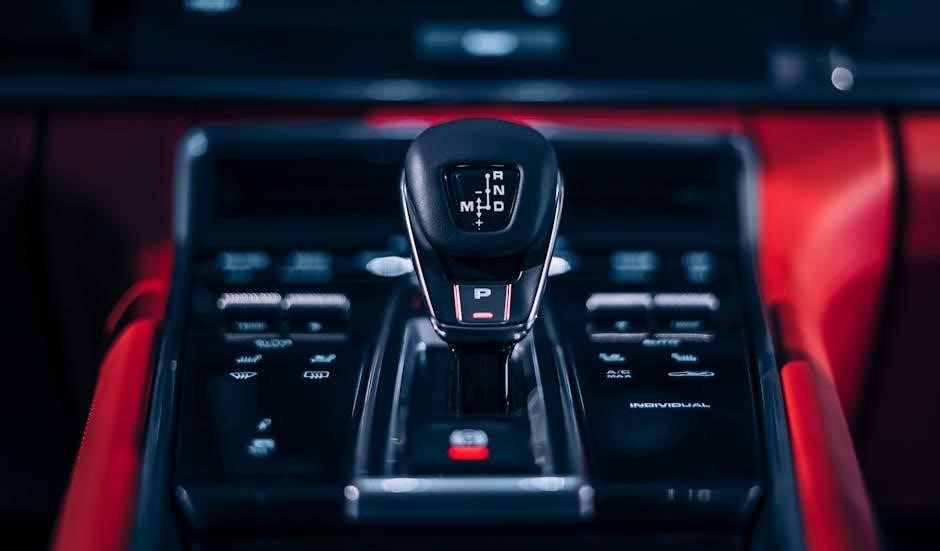
Maintenance and Repair
Maintenance and repair for automatic transmissions differ significantly from manuals, often requiring specialized tools and expertise. Regular fluid changes, filter inspections, and torque converter checks are essential.
7.1. Post-Conversion Maintenance
After converting to an automatic transmission, regular maintenance is crucial to ensure optimal performance. This includes checking transmission fluid levels, inspecting the torque converter, and monitoring the transmission pan for leaks. Additionally, ensuring proper filter replacements and maintaining the correct fluid type are essential. Drivers should also pay attention to any unusual noises or performance issues, addressing them promptly to prevent costly repairs. Routine servicing by a qualified mechanic can help maintain the longevity and efficiency of the newly installed automatic system, ensuring a smooth and trouble-free driving experience for years to come.
7.2. Automatic vs. Manual Transmission Maintenance
Automatic transmissions generally require more complex maintenance compared to manual transmissions. While manual transmissions need regular clutch inspections and occasional fluid checks, automatic transmissions involve more intricate components like the torque converter, solenoids, and planetary gears. Automatics also require frequent transmission fluid changes and filter replacements to maintain optimal performance. However, manual transmissions often demand more driver involvement and can wear out the clutch faster, especially in stop-and-go traffic. In contrast, automatics offer a lower maintenance burden for drivers but may incur higher costs for repairs and servicing over time. Regular inspections and timely interventions are crucial for both systems to ensure longevity and reliability.
7.3. Warranty and Service Considerations
When converting a manual to an automatic transmission, it’s crucial to consider warranty and service implications. Professional installation is often required to maintain manufacturer warranties, as improper conversion can void them. Additionally, aftermarket automatic transmissions may come with their own warranties, but these vary by supplier. Regular servicing is essential to ensure optimal performance and longevity of the new system. Automatic transmissions typically require more frequent fluid changes and filter replacements compared to manuals. Proper maintenance can help avoid costly repairs and ensure the system operates smoothly. Always consult with a qualified technician to understand the specific service requirements for your converted transmission and to address any potential issues early.
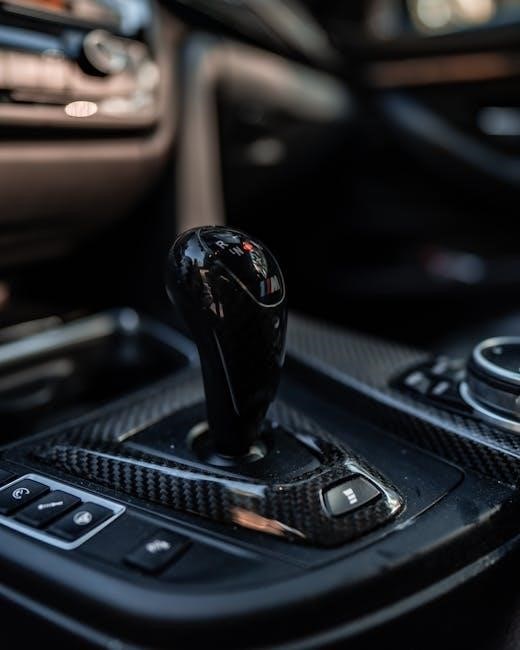
Legal and Regulatory Compliance
Converting a manual to an automatic transmission must comply with local emissions standards and roadworthiness tests. Professional installation ensures adherence to regulations, avoiding legal issues and penalties.
8.1. Emissions Standards
Converting a manual to an automatic transmission must ensure compliance with emissions standards. Modern automatic transmissions often feature advanced technology that improves fuel efficiency and reduces emissions. However, the conversion process requires careful consideration to avoid violating environmental regulations. Emissions testing may be necessary to confirm that the modified vehicle meets local standards. Additionally, ensuring the new transmission is compatible with the vehicle’s engine and exhaust system is crucial to maintaining emissions compliance. Failure to comply can result in legal consequences, making it essential to use factory-approved components and consult with regulatory authorities during the conversion process to ensure adherence to all emissions requirements.
8.2. Roadworthiness Tests
After converting a manual to an automatic transmission, roadworthiness tests are essential to ensure the vehicle operates safely and as intended. These tests typically involve evaluating braking performance, acceleration smoothness, and gear shifting functionality to confirm the transmission integrates seamlessly with the engine and other systems. Authorities may require inspections to verify compliance with safety and operational standards. Proper testing helps identify potential issues, such as inconsistent shifting or loss of power, which could compromise road safety. Conducting thorough roadworthiness tests guarantees the vehicle meets legal and safety requirements, providing peace of mind for drivers and ensuring the conversion is successful and reliable.

Future Trends in Transmission Technology
Future transmission technology integrates AI for smarter gear shifting, exemplified by Koenigsegg’s CC850, blending manual and automatic systems for enhanced efficiency and seamless driving experiences.
9.1. Advancements in Automatic Transmission Technology
Recent advancements in automatic transmission technology have introduced smarter, more efficient systems. Dual-clutch transmissions now offer rapid shifting, combining the precision of manuals with automatic convenience. AI-driven systems optimize gear selection based on driving habits and road conditions, enhancing performance and fuel efficiency. High-end vehicles feature multi-speed automatics, such as Koenigsegg’s nine-speed unit, which integrates seamlessly with internal combustion and hybrid powertrains. These innovations ensure smoother acceleration, better control, and a more intuitive driving experience. The integration of AI and advanced materials continues to push the boundaries, making automatic transmissions more refined and adaptable than ever before.
9.2. The Rise of Dual-Clutch and Semi-Automatic Transmissions
Dual-clutch transmissions (DCTs) and semi-automatic systems have emerged as popular alternatives, blending manual control with automatic convenience. High-performance sports cars favor DCTs for their quick shifts and driver engagement. Semi-automatic transmissions, like Ferrari’s F1 system, use manual gear selection without a clutch pedal, offering a hybrid driving experience. These systems are increasingly sought after for their responsiveness and versatility, appealing to both enthusiasts and everyday drivers. The rise of these technologies highlights a shift toward combining the best aspects of manual and automatic transmissions, delivering enhanced performance and user-friendly operation in modern vehicles.
9.3. The Role of AI in Transmission Systems
Artificial Intelligence (AI) is revolutionizing transmission systems by enabling smarter, more adaptive gear-shifting strategies. Modern automatic transmissions now utilize AI to analyze driving patterns, road conditions, and engine performance in real time. This allows for precise, predictive shifting that enhances fuel efficiency and driving comfort. AI also optimizes torque converter engagement and reduces wear on components by minimizing unnecessary gear changes. Additionally, AI-driven systems can learn a driver’s preferences over time, offering a more personalized driving experience. As technology advances, AI is expected to play a pivotal role in creating seamless, intuitive transmission systems that further blur the line between manual and automatic driving experiences.
Converting a vehicle from manual to automatic transmission brings numerous benefits, including enhanced convenience and smoother performance. However, it requires careful consideration of costs and expertise. Consulting professionals ensures a successful conversion.
10.1. Summary of Key Points
Converting a manual to an automatic transmission offers enhanced driving convenience, smoother performance, and reduced effort, especially in heavy traffic or towing scenarios. The process involves selecting the right transmission, removing manual components, and integrating necessary parts like a torque converter. While costs can vary, professional expertise is crucial for a seamless conversion. Benefits include improved ease of use, towing advantages, and potential performance gains. However, challenges like technical difficulties and compatibility issues must be addressed. Proper maintenance and adherence to regulations ensure long-term reliability. Ultimately, this conversion modernizes the driving experience, catering to those seeking comfort and efficiency without compromising vehicle performance.
10.2. Final Thoughts on Manual to Automatic Conversion
Converting a manual to an automatic transmission is a significant decision that balances convenience, performance, and cost. While it offers enhanced ease of use and towing capabilities, the process requires careful planning and professional expertise. The transition can modernize your driving experience, making it more accessible and enjoyable, especially in urban or high-traffic environments. However, the complexity and expense of the conversion must be weighed against its benefits. For those seeking a smoother, less labor-intensive drive, automatic transmissions provide a reliable and efficient solution. Always consult professionals to ensure compatibility and optimal results, as this conversion is a substantial investment in your vehicle’s future performance and usability.
10.3. Next Steps for Those Considering Conversion
If you’re considering a manual to automatic transmission conversion, start by researching your vehicle’s compatibility and the specific requirements for the process. Consult with a qualified mechanic or transmission specialist to discuss your options and ensure the conversion aligns with your driving needs and budget. Gather detailed cost estimates, including parts, labor, and potential additional modifications. Explore financing options if necessary, and review local regulations to ensure compliance. Finally, schedule a thorough inspection of your vehicle to confirm its readiness for the conversion. Taking these steps will help you make an informed decision and prepare for a successful transition to an automatic transmission system.